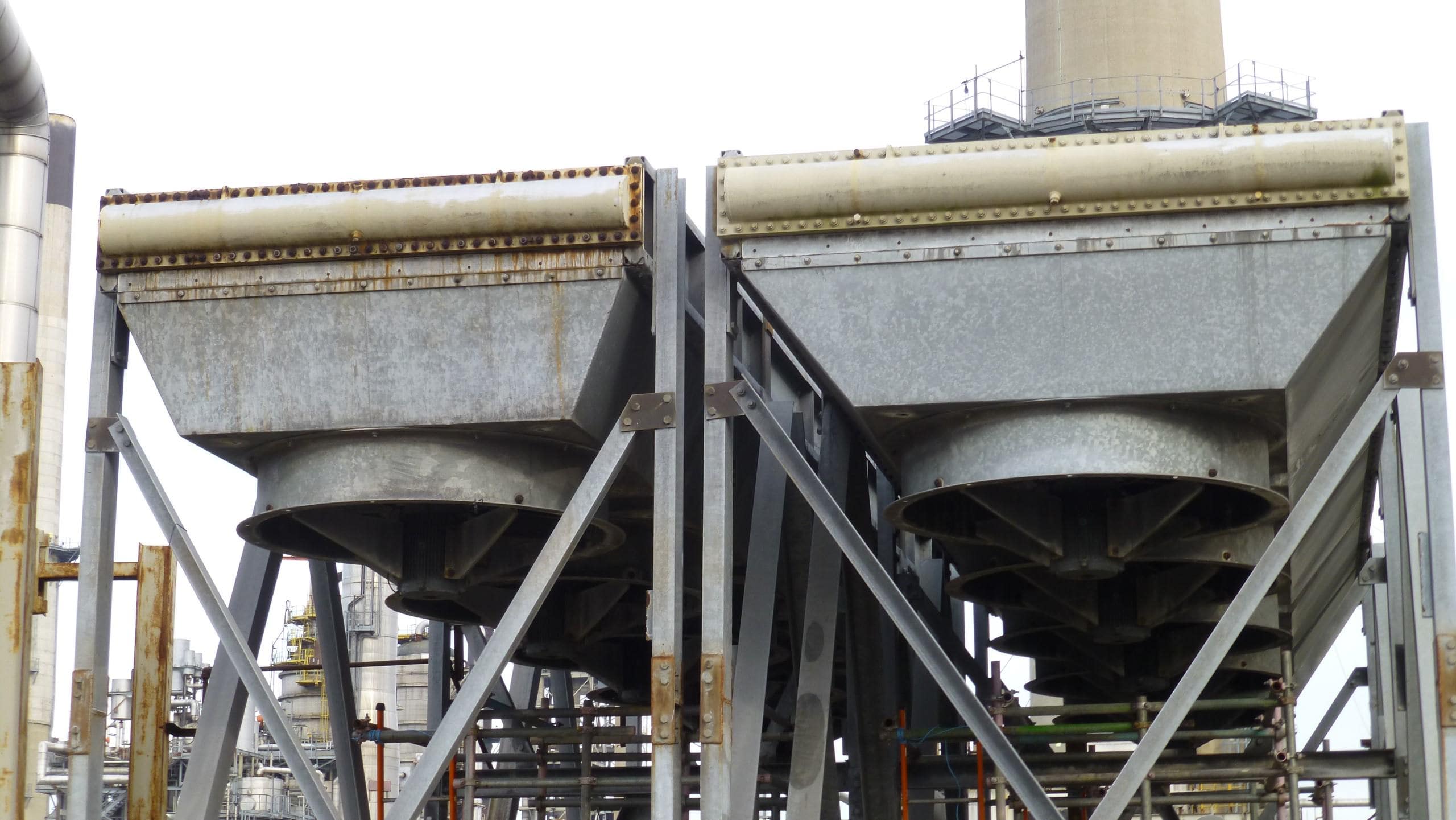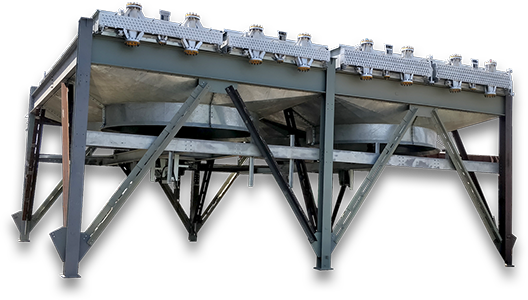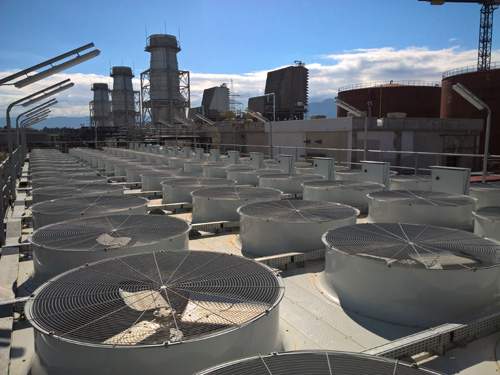In the ever-evolving landscape of industrial processes, efficient heat transfer plays a pivotal role in optimizing energy usage, reducing operational costs, and minimizing environmental impact. Among the various heat exchange technologies available, fin fan heat exchangers have emerged as a game-changer, revolutionizing the way industries approach thermal management. These innovative devices offer unparalleled performance, versatility, and cost-effectiveness, making them an indispensable component in diverse sectors ranging from power generation to chemical processing and beyond.

Understanding Fin Fan Heat Exchangers
Fin fan heat exchangers are a type of air-cooled heat exchanger that utilizes extended surface fins and forced air convection to facilitate efficient heat transfer. These devices consist of a core constructed from a series of finned tubes arranged in a compact configuration, with fans mounted on one or both ends to provide forced airflow. The fins, typically made of lightweight materials like aluminum or copper, increase the surface area available for heat transfer, while the fans ensure optimal airflow across the finned surfaces.
As hot fluid flows through the tubes, the extended fins dissipate heat into the surrounding air, which is continuously circulated by the fans. This design maximizes the heat transfer rate, enabling effective cooling or heating of the fluid stream while minimizing the overall footprint and energy consumption.
What is the primary mechanism of heat transfer in fin fan heat exchangers?
The primary mechanism of heat transfer in fin fan heat exchangers is forced convection, where fans provide continuous airflow across the finned surfaces, facilitating efficient heat transfer between the hot fluid and the surrounding air.
Advantages of Fin Fan Heat Exchangers
Fin fan heat exchangers offer a multitude of advantages that have contributed to their widespread adoption across various industries:
- High thermal efficiency: The combination of finned surfaces and forced airflow maximizes heat transfer rates, resulting in superior thermal efficiency compared to traditional air-cooled heat exchangers.
- Compact design: The compact configuration of the finned tube core allows for a large heat transfer surface area within a relatively small footprint, minimizing the required installation space.
- Low maintenance: With no water or other coolants involved, fin fan heat exchangers have fewer moving parts and require less maintenance compared to other heat exchange systems.
- Environmentally friendly: By utilizing ambient air as the cooling medium, fin fan heat exchangers eliminate the need for water consumption and associated treatment processes, reducing their environmental impact.
- Versatility: These heat exchangers can be designed to handle a wide range of fluid types, temperatures, and flow rates, making them suitable for various industrial applications.
What is one of the key advantages of fin fan heat exchangers?
One of the key advantages of fin fan heat exchangers is their compact design, which allows for a large heat transfer surface area within a relatively small footprint, minimizing the required installation space.

Applications of Fin Fan Heat Exchangers
Fin fan heat exchangers have found widespread applications across numerous industries due to their exceptional performance, versatility, and cost-effectiveness. Some common applications include:
- Power generation: Utilized in power plants for cooling various components, such as turbines, generators, and transformers, as well as in condensers and heat recovery systems.
- Chemical processing: Employed for cooling or heating processes in chemical plants, refineries, and petrochemical facilities, including heat recovery and heat rejection applications.
- HVAC systems: Incorporated in heating, ventilation, and air conditioning systems for commercial and industrial buildings, providing efficient cooling or heating of air or water streams.
- Refrigeration and air conditioning: Used as condensers or evaporators in refrigeration systems and chillers, facilitating heat transfer between the refrigerant and ambient air.
- Automotive and transportation: Found in vehicles and transportation systems for cooling engine components, transmission systems, and air conditioning units.
What is one industry where fin fan heat exchangers are commonly used?
Fin fan heat exchangers are commonly used in the power generation industry, where they are utilized for cooling various components such as turbines, generators, and transformers, as well as in condensers and heat recovery systems in power plants.
Design Considerations
When designing and selecting a fin fan heat exchanger for a specific application, several factors need to be considered:
- Thermal load and flow rates: The required heat transfer capacity and the flow rates of the hot fluid and air streams determine the overall size and configuration of the heat exchanger.
- Operating temperatures and pressures: The operating temperatures and pressures of the fluid stream influence the material selection for the tubes, fins, and casing, as well as the fan specifications.
- Space constraints: The available installation space often dictates the physical dimensions and layout of the fin fan heat exchanger, necessitating a compact and efficient design.
- Environmental conditions: Factors such as ambient temperature, humidity, and air quality can impact the heat transfer performance and may require additional design considerations or protective measures.
- Noise and vibration: Proper fan selection and mounting arrangements are crucial to minimize noise and vibration levels, particularly in noise-sensitive environments.
What factor needs to be considered when selecting a fin fan heat exchanger for a specific application?
One factor that needs to be considered when selecting a fin fan heat exchanger for a specific application is the available installation space, as space constraints often dictate the physical dimensions and layout of the heat exchanger, necessitating a compact and efficient design.

Materials and Construction
The materials used in the construction of fin fan heat exchangers play a crucial role in their performance, durability, and suitability for specific applications. Common materials include:
- Tube materials: Stainless steel, carbon steel, copper, and aluminum are widely used for the construction of tubes, depending on factors such as corrosion resistance, thermal conductivity, and cost.
- Fin materials: Aluminum and copper are popular choices for fins due to their high thermal conductivity and lightweight properties.
- Casing materials: Galvanized or stainless steel casings provide structural support and protection against environmental factors.
- Fan materials: Fans are typically made from corrosion-resistant materials like stainless steel or aluminum, with specialized coatings or composites used in harsh environments.
The construction methods and quality control processes employed in the manufacturing of fin fan heat exchangers are critical to ensuring their reliability, longevity, and consistent performance.
Maintenance and Monitoring
Proper maintenance and monitoring practices are essential for ensuring the optimal performance and extended service life of fin fan heat exchangers. Regular inspections and cleaning are recommended to prevent fouling, corrosion, and debris accumulation, which can impair heat transfer efficiency and lead to premature failure.
Some common maintenance tasks include:
- Air-side cleaning: Removing dust, dirt, and other contaminants from the finned surfaces using compressed air, water, or specialized cleaning solutions.
- Tube inspection and cleaning: Periodic inspection and cleaning of the tubes to remove any scale or deposits that may have accumulated over time.
- Fan and motor maintenance: Regular lubrication, alignment checks, and replacement of worn components to ensure proper fan operation and minimize vibration.
- Monitoring and data analysis: Continuous monitoring of key parameters such as temperatures, pressures, and flow rates can aid in identifying potential issues and optimizing performance.
By implementing a comprehensive maintenance and monitoring program, industries can maximize the operational lifespan of their fin fan heat exchangers, minimize downtime, and ensure reliable and efficient operation.

Conclusion
Fin fan heat exchanger have revolutionized industrial processes by providing a highly efficient, compact, and cost-effective solution for heat transfer applications. Their unique design, which combines extended finned surfaces and forced airflow, enables superior thermal performance while minimizing energy consumption and environmental impact. Across diverse sectors such as power generation, chemical processing, HVAC systems, and refrigeration, fin fan heat exchangers have become indispensable components, contributing to energy optimization, reduced operational costs, and improved sustainability. As industries strive to meet increasingly stringent energy and environmental standards, the adoption of these innovative heat exchange technologies will continue to play a crucial role in driving efficiency and environmental stewardship. Looking ahead, advancements in materials, manufacturing processes, and design optimization will further enhance the capabilities of fin fan heat exchangers, enabling even higher thermal efficiencies, improved durability, and tailored solutions for specific applications. By embracing these cutting-edge technologies, industries can stay at the forefront of thermal management, ensuring reliable and cost-effective operations while contributing to a more sustainable future.























